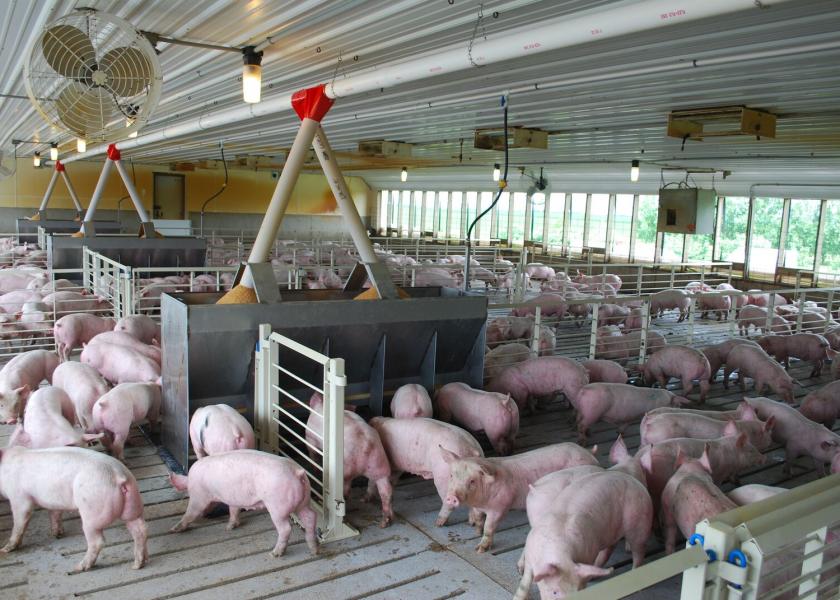Research: Hog Cholera and Pseudorabies Could Spread Through Feed

New research from the Kansas State University College of Veterinary Medicine provides the investigation into how feed and feed ingredients may be playing a role in the spread of two swine viruses of global significance.
Megan Niederwerder, lead researcher and K-State assistant professor of diagnostic medicine and pathobiology, and her colleagues have published the first report of classical swine fever virus and pseudorabies virus stability in feed ingredients subjected to different environmental conditions mimicking transpacific shipment. "Stability of classical swine fever virus and pseudorabies virus in animal feed ingredients exposed to transpacific shipping conditions" is available online in the journal Transboundary and Emerging Diseases.
"Classical swine fever virus and pseudorabies virus cause two of the top four transboundary animal diseases of importance to swine," Niederwerder said. "Both viruses are endemic to areas of the world where feed ingredients are manufactured and imported into the United States each year."
Currently, U.S. commercial swine are free of both classical swine fever virus and pseudorabies virus because of costly eradication programs completed in 1978 and 2004, respectively. Niederwerder said reintroduction of these viruses into U.S. swine herds would be devastating and that there are concerns that feed ingredients incorporated into swine diets may serve as new sources for the spread of animal diseases with economic and welfare significance. Recent changes in pseudorabies virus strain virulence and classical swine fever virus geographic distribution are of great concern for these trade-limiting diseases.
"The emerging threat of classical swine fever virus and pseudorabies virus being reintroduced into U.S. commercial swine is significant and preventing entry is critical for the U.S. pork industry," Niederwerder said. "The route of introducing and transmitting swine viruses through feed has been recognized since the 2013-2014 outbreak of porcine epidemic diarrhea virus. However, the stability of classical swine fever virus and pseudorabies virus in imported feed ingredients had yet to be investigated."
In the researchers' study, they found both viruses survived for the length of the 37-day model in feed, with pseudorabies virus having increased stability across a broader range of feed ingredients when compared to classical swine fever virus.
Niederwerder said pseudorabies virus was detected in nine of the 12 tested ingredients: conventional and organic soybean meal, lysine, choline, vitamin D, moist cat and dog food, dry dog food, and pork sausage casings at the conclusion of the simulated voyage. When looking at classical swine fever virus, two of the 12 ingredients had infectious virus detected: conventional soybean meal and pork sausage casings.
"This study reports novel data about environmental stability of classical swine fever virus and pseudorabies virus in feed and includes important quantitative information that can be incorporated into risk models for preventing the potential spread of classical swine fever virus and pseudorabies virus through imported feed ingredients," Niederwerder said. "This information adds to our work on African swine fever and reinforces the concept of feed biosecurity for disease prevention."
This research was conducted at Kansas State University's Biosecurity Research Institute, a biosafety level-3 and biosafety level 3Ag facility that allows safe and secure research with animal and plant diseases foreign to the U.S., in collaboration with other university and industry contributors. Co-authors on the manuscript include Ana Stoian, Vlad Petrovan, Laura Constance, Matthew Olcha, Maureen Sheahan and Bob Rowland with Kansas State University; Scott Dee, Pipestone Veterinary Services; Diego Diel, Cornell University; and Gil Patterson, Lincoln Memorial University.'
More on Farm Journal's PORK:
Experts Say Food Waste May Be Cause of Hog Cholera in Okinawa
Stop Swill Feeding to Prevent African Swine Fever in the U.S.







